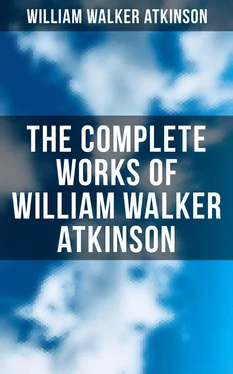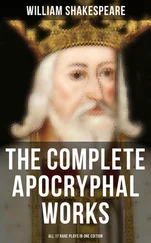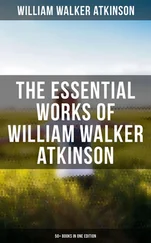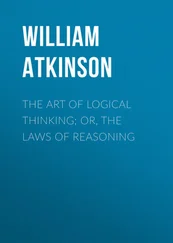It is also generally conceded that the beliefs, preconceived opinions, trend of mind, and general prejudice for or against, of a witness is apt to sway his judgment and observation, usually unconsciously, and to influence his testimony to some extent. There are very few people who can rise above these influences in making observations or in relating experiences. We generally see that for which we look , and are apt to tell of things as we think they might have, or should have been, rather than as they actually were. The personal bias must always be taken into consideration. The correspondence of the fact testified to with the general laws of nature and ordinary actions of things and persons is a point in the favor of its testimony, and vice versa . For instance, one testifying that he had seen a man with two heads, or an elephant with wings, might expect to be doubted. Testimony, cropping out incidentally in the main story, is generally held more likely to be true than untrue, for the false witness generally confines his lies to the main points of his story. Silence regarding an important point is generally construed as indicating the non-existence of the occurrence or event in question, owing to the great probability that it would have been brought out in the testimony had it existed.
The truth of testimony is held to be corroborated by the concurrence of other witnesses in the main points, particularly if the stories vary in irrelevant minor details instead of suspiciously agreeing upon even the minor points not material to the issue. No two persons ever tell exactly the same story regarding the same event experienced by both. Each relates what he saw and felt, in the light of his previous training, experience, and trend of character.
Chief Justice Shaw makes the following interesting and instructive distinction between Direct and Circumstantial Evidence:
“Each of these modes of proof has its advantages and disadvantages; it is not easy to compare their relative value. The advantage of positive evidence is, that you have the direct testimony of a witness to the fact to be proved, who, if he speaks the truth, saw it done; and the only question is, whether he is entitled to belief! The disadvantage is that the witness may be false and corrupt, and the case may not afford the means of detecting his falsehood. But, in a case of circumstantial evidence where no witness can testify directly to the fact to be proved, you arrive at it by a series of other facts, which by experience we have found so associated with the fact in question, as in the relation of cause and effect, that they lead to a satisfactory and certain conclusion; as when footprints are discovered after a certain snow, it is certain that some animated being has passed over the snow since it fell; and, from the form and number of the foot-prints, it can be determined with equal certainty, whether it was a man, a bird, or a quadruped. Circumstantial evidence, therefore, is founded on experience and observed facts and coincidences, establishing a connection between the known and proved facts and the fact sought to be proved. The advantages are, that, as the evidence commonly comes from several witnesses and different sources, a chain of circumstances is less likely to be falsely prepared and arranged, and falsehood and perjury are more likely to be detected and fail of their purpose. The disadvantages are, that a jury has not only to weigh the evidence of facts, but to draw just conclusions from them; in doing which, they may be led by prejudice or partiality, or by want of due deliberation and sobriety of judgment, to make hasty and false deductions; a source of error not existing in the consideration of positive evidence.”
It must be remembered that what has been said in this chapter about Testimony, refers not only to verbal testimony, but also to the testimony contained in books and other writings, and to the testimony of tradition. The same general principles apply to all forms of testimony.
Hyslop says of Argument upon Testimony: “This is a form of argument based upon the credibility of a witness to real or alleged facts. The facts are circumstantial evidence of the thesis, and the character of the witness is a measure of the weight attaching to his testimony on the facts. ‘The degree of weight to be attributed to testimony is always to be estimated by this view of the nature of testimony—that it is a sign, implying the facts to which it testifies as more or less necessary conditions of its having been given. Whenever, therefore, occasions or motives exist in the case for giving the testimony other than the truth, the credibility of the witness will be so far impaired. We are thus to judge of the credibility of historians. The historian of a sect or of a party must be received as a credible witness only so far as it may appear that truth was the condition of his speaking as he does. All admissions against his own sect or party, unless made as baits or lures, will be received as honest testimony. If these qualifications are wanting, there is nothing on which testimony can rest.’ But where honesty and candor, as well as good judgment, exist, the facts attested will have all the weight of these qualities, though this may not be so great as in the case that the facts are personally known by the disputants.”
Testimony may be not only as regards facts , but also as regards opinion, in which latter instance the testimony is known as “expert evidence.” Expert evidence is the testimony of persons presumed to be competent to exercise a higher perception, judgment and discrimination in the particular subject, than the ordinary individual, by reason of their special training, experience and judgment. As Hyslop well expresses it: “It means to accept the judgment of qualified men where common experience is not a guide.”
Evidence is the raw material from which the finished product of argument is woven. The grade of the product—its degree of fineness—its texture and weave—its adequacy and fitness for its purpose—all these things depend upon the skill of the weaver. And, moreover, the very color of the woven material, depends upon the art, science and skill of the artisan handling the material from its crude state until it emerges a finished article offered to the consideration of the public. From the same material is produced the coarsest fabric and the finest weave—the crudest hue and the most beautiful tints.
Chapter XIII.
False Argument
Table of Content
IN THE process of Argumentative Discourse there frequently is manifested what is called False Argument, or Argument based upon Fallacy.
Fallacy is: “An unsound argument or mode of arguing, which while appearing to be decisive of a question, is in reality not so; an argument or proposition apparently sound, but really fallacious; a fallacious statement or proposition, in which the error is not apparent, and which is therefore likely to deceive or mislead; sophistry.” The word is derived from the Latin word fallax , meaning “deceitful.” While the question of Fallacy properly belongs to the subject of Logic, still various forms of Fallacy make their appearance as False Argument and very properly form a part of the general subject of Argumentative Discourse.
As Jevons says: “In learning how to do right it is always desirable to be informed as to the ways in which we are likely to go wrong. In describing to a man the road which he should follow, we ought to tell him not only the turnings which he is to take, but also the turnings which he is to avoid. Similarly, it is a useful part of logic which teaches us the ways and turnings by which people most commonly go astray in reasoning.” Likewise, it is proper to inform the student of Argumentative Discourse of the false arguments, frequently used by persons engaged in debate or discussion, that he may guard himself against them by knowing their nature and form.
Читать дальше












